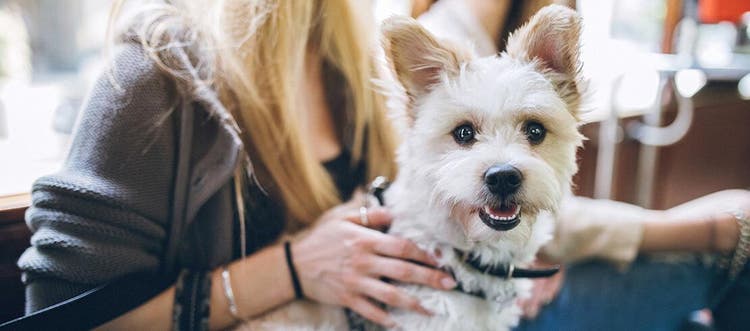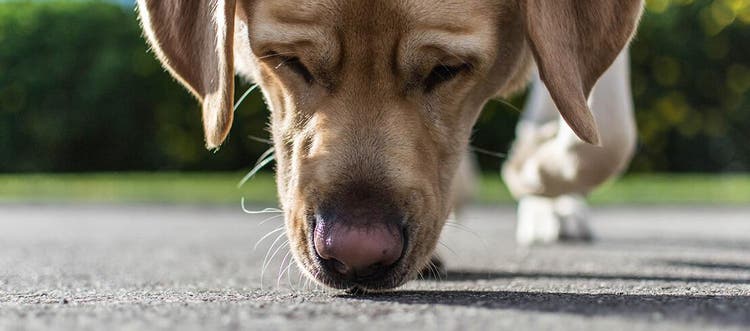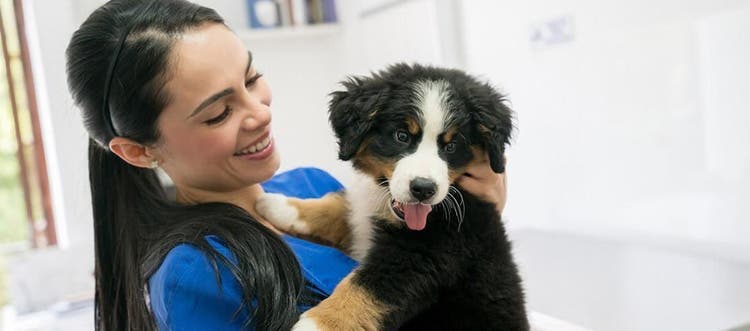Reviewed by Dr Abbie Lam DVM
Thinking of getting your first dog? Use our guide to the best dog breeds for new owners to help you choose the perfect companion.
All dogs have unique characteristics and personalities, but different breeds have distinct traits, training considerations and grooming needs. Some breeds require more effort and experience, while other breeds are particularly well suited to first-time owners.
Small breeds
Certain small breeds are particularly suited to first-time dog owners.
1. Papillon

Papillons are a loyal, affectionate breed that adapts easily to the lives of their owners. At under 5 kg and less than 30 cm high, they're small enough to live in an apartment. You don't need a garden either, as their exercise needs at just 20-30 minutes per day are modest.
Though they have long silky hair, Papillons do require daily grooming to prevent matting, particularly around their ears and legs.
Papillons are great for first-time owners because they're extremely intelligent and, therefore, relatively easy to train. However, training must begin early. Take a gentle yet firm approach. These dogs are also prone to yapping, which must be addressed through training from an early age.
2. Miniature Dachshund

What miniature dachshunds lack in height – most are under 20 cm tall – they make up for in personality. They are intelligent, fun-loving and feisty dogs that are confident around people and keen to be involved with everything that’s going on. Typically, they are bundles of energy, which means they need plenty of exercise and mental stimulation throughout the day.
Given a positive outlet for their energy, they make cheerful, loving companions. However, miniature dachshunds hate to be alone or bored. This can lead to destructive behaviours such as chewing shoes or furniture – a sign of separation anxiety. So if you have a lot of time, then the miniature dachshund could be the ideal first-time dog for you. It is recommended for miniature dachshunds to get around one hour of exercise a day.
Dachshunds are prone to medical conditions such as intervertebral disc disease, obesity and arthritis, so dog insurance is recommended.
3. Bichon Frise

These petite dogs weigh under 5 kg and have wonderfully playful, confident dispositions. They get along well with kids, which makes them an excellent first-time dog for families. Bichons are also highly intelligent, which makes training them a relatively easy proposition, and they are easy-going enough to adapt to life in a big house in the country or a small city apartment.
They are moderately active so it is best for them to get at least 20-30 minutes of exercise a day.
Like many dog breeds, bichons find being alone stressful and they can suffer badly from separation anxiety, meaning they are best suited to households where someone is often at home. Bichons are also quite high maintenance when it comes to grooming. While it’s true that they look incredibly cute, they will need to visit a groomer at least every couple of months, which can add significantly to the cost of keeping them.
Medium and Large Breeds
Larger dogs can also be great for first-time owners, and while they typically require more food, they also need more exercise, which is great if you're looking for an excuse to go on long walks. Here are some of the best medium-to-large breeds for first-time owners.
4. Golden Retriever

Golden retrievers are hugely popular with first-time owners, and it’s easy to see why. They have gentle, playful natures and an uncomplicated, natural sense of loyalty that makes them reliable and trustworthy. They are very intelligent and eager-to-please, making them very trainable. They’re also good around children and make great family pets.
Golden retrievers need a lot of exercise – up to two hours a day – and all that time running around outside means their long coats also require a lot of brushing and grooming to stay in tip-top condition.
While golden retrievers retain their playfulness well into adulthood, they tend to suffer from health problems as they age, including vision and joint problems. Dog insurance can help ease the cost of veterinary care.
5. Labrador

Along with the golden retriever, the Lab is considered a classic first-time dog, particularly for families. Their gentle yet fun-loving personalities make them perfect playmates for children – and for adults, too. They are highly intelligent and eager to please, which makes training easy, even for inexperienced owners.
Labradors are high-energy dogs and need a lot of exercise and mental stimulation. They also have a high food drive, and obesity is a common problem, particularly later in life. Because of this, Labradors are best suited to homes with gardens and to households where they will get a long walk every day.
Labradors require a moderate amount of grooming, brushing them once a week is enough.
Read our guide on choosing between the loving Lab and the good-natured golden retriever.
6. Standard Poodle

Poodles are highly intelligent dogs and adept at learning new tricks and commands. They are also playful, loyal and loving, all of which makes them a great choice for first-time owners.
Poodles are also a high-energy breed, which means they get bored without a lot of stimulation and exercise. Most poodles need at least two walks a day. If they don’t get a lot of stimulation and playtime, poodles can become bored and unhappy, so they are best suited to households where they will receive the time and attention they naturally crave.
Poodles’ coats also need a lot of care to prevent matting, and daily brushing is a must, along with a trip to a professional groomer three to four times a year.
7. Greyhound

Greyhounds are gentle and loving dogs, and while they do have some specific needs, they make great first-time pets for owners.
Most striking about the greyhound is their sleek, athletic physique. Not surprisingly, these dogs are built to run and require a couple of walks a day.
Care is needed when walking greyhounds because of their strong prey drive. This can cause them to get lost while in pursuit or even get injured if they run too fast on uneven ground. Train greyhounds early and well - particularly to come back when called. In Australia, many greyhounds that have raced (chasing lures) are made available for rehoming in their retirement through reputable adoption organisations and have become highly sought after as ideal pets.
Luckily, greyhounds are intelligent dogs and learn quickly when trained with patience and kindness. Note that they are sensitive and easily scared. Time invested in training your greyhound will definitely pay off at the end of the day, as they love to snuggle after a run.
While training your greyhound might take a bit more time, you'll gain it back on the grooming front. With their short, tight coats, Greyhounds need only be brushed once a week to look their best.
Mixed-breed Dogs
Of course, many other breeds can make great first-time dogs – as can mixed-breeds. Local shelters and rescue centres are where you may find the perfect temperament mixed breeds to be a wonderful first-time dog for you. You can also find certain mixed breeds available from breeders, such as the cavoodle.
The advantage of going to a rescue centre is that the staff will have a good idea of which dogs will suit first-time owners and which might benefit from a more experienced hand. Most centres will assess the dogs in experienced short-stay intermediate homes, around children and other pets, before assigning the dog a suitable home. While there will undoubtedly be some of the above breeds available for adoption, there will be a lot of mixed-breed dogs, too, any one of which could have the right personality for you.
Learn how to raise your new puppy with our guide to puppy training.
References
Smith GK, Mayhew PD, Kapatkin AS, McKelvie PJ, Shofer FS, Gregor TP. Evaluation of risk factors for degenerative joint disease associated with hip dysplasia in German Shepherd Dogs, Golden Retrievers, Labrador Retrievers, and Rottweilers. Journal of the American Veterinary Medical Association. 2001 Dec 15;219(12):1719-24.






